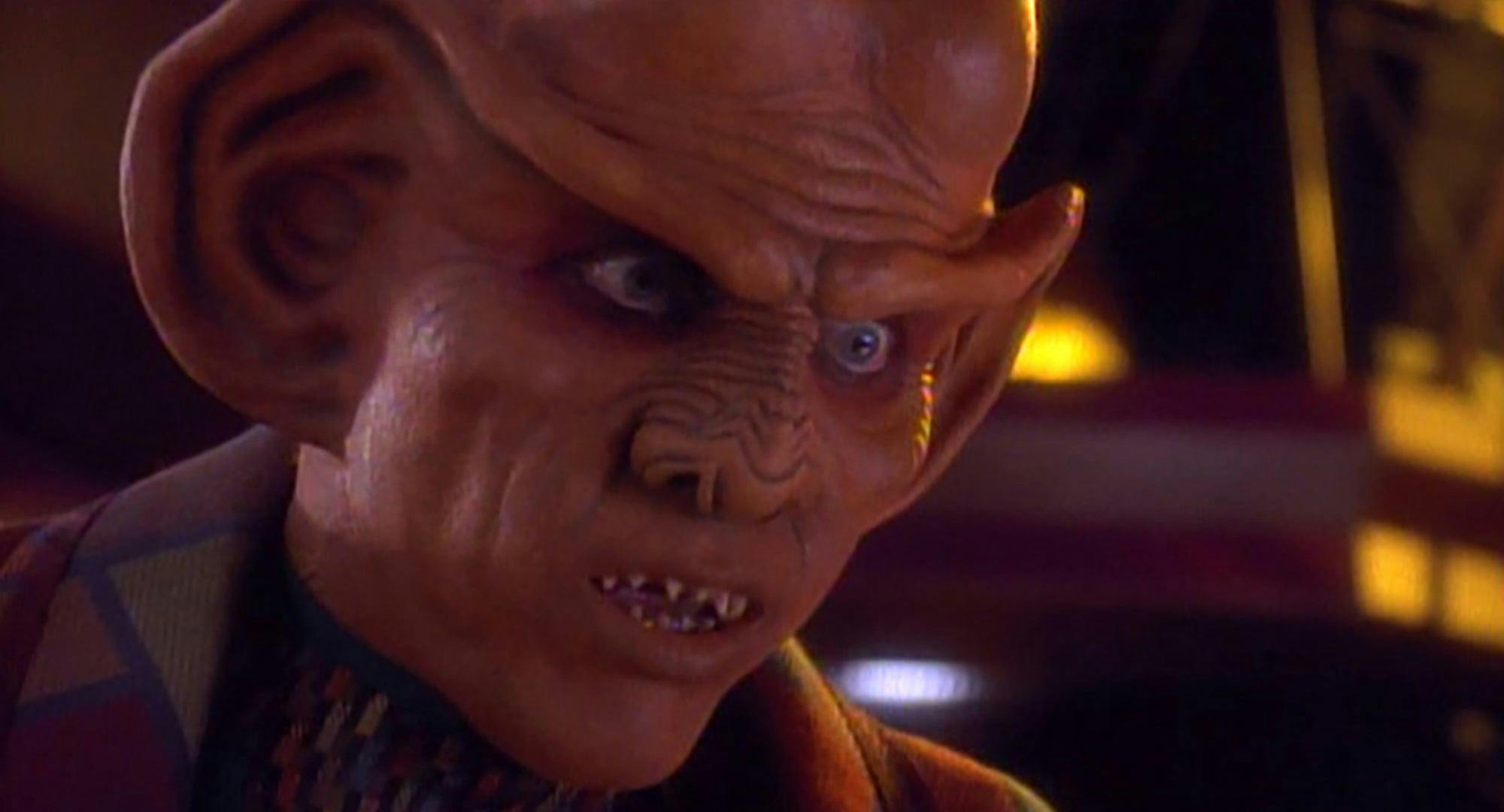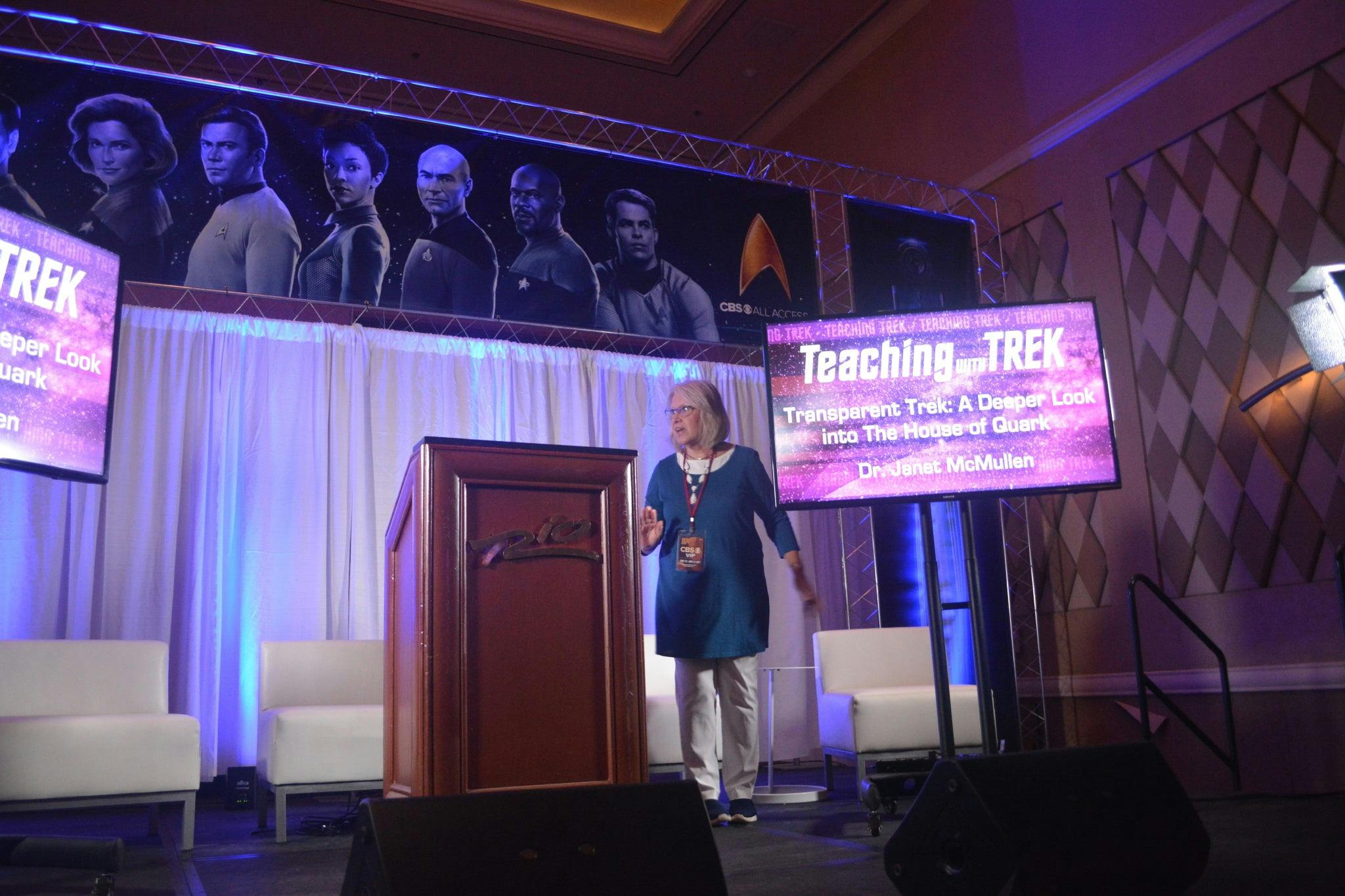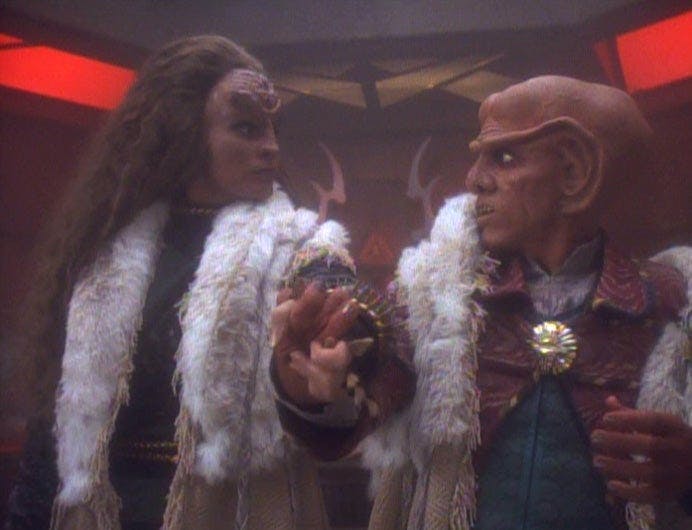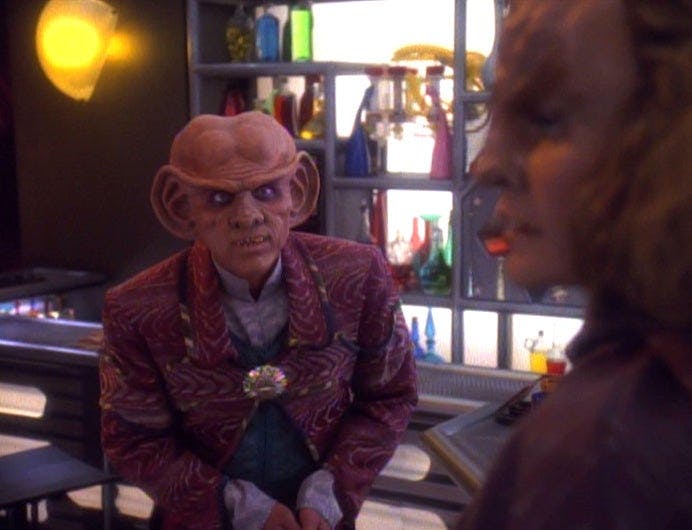Published Aug 2, 2019
Dispatches from #STLV: The Devil's in the Details
Today we learned to unravel the deeper meaning of 'Trek' by looking at the subtler signs.

StarTrek.com
We come to Star Trek Las Vegas to have fun, but much like the franchise itself, the convention is full of opportunities to learn. The 2019 convention got underway with a session about semiotics — the study of symbols and signs — through the lens of a Star Trek: Deep Space Nine episode. In her “Transparent Trek: A Deeper Look into ‘The House of Quark’” panel, Dr. Janet McMullen, Associate Professor of Communications at University of North Alabama, gave fans an opportunity to experience what it’s like to take a college-level class on Star Trek – the kind Lieutenant Nyota Uhura might teach if she decided to offer courses in communications theory.

StarTrek.com
McMullen then walked us through an episode of DS9 that may or may not have been memorable for the audience before yesterday’s lecture, but certainly will be now. DS9 fans will recall that “House of Quark” opens with the accidental death of a Klingon in Quark’s Bar. Quark, keeping to his values as a Ferengi, quickly realizes that he can profit from the incident by claiming that he killed the Klingon in self-defense. Over the arc of the episode, this profiteering decision drags Quark into a Klingon family drama, where he eventually has to make a difficult choice between generosity and self-preservation.
Even the most enthusiastic Trek fan might think that there isn’t much to learn from this episode – but Dr. McMullen was at the convention to disabuse everyone of that notion. In a one-hour session, the professor introduced us to the field of semiotics, which she defined as “the study of ‘how’ signs mean.” By signs, she specifically meant “anything that stands for something else.” These signs are forms of representation: a way of gaining new insight into reality by “re-presenting” it from another perspective.

StarTrek.com
This may sound like it would be easily confusing and too theoretical, but Dr. McMullen came prepared to make the material very accessible, even to someone totally new to communications theory. With a quick PowerPoint presentation and a handout that we got to take home, McMullen outlined how symbols and filming techniques are used in episodes of shows like Star Trek, to create the emotional journey that we go through every time we watch.
In offering us this perspective, McMullen showed us a way to enrich our viewing experience: television like Star Trek can be interpreted through the lens of old European literary tradition where, for example, triangles are a sign of danger and red signals passion and blood, while green symbolizes money and greed. Dr. McMullen provided commentary while the episode was shown, highlighting that Quark is wearing a red jacket over a red jumpsuit, and that in certain lighting his Klingon wife’s face has very visible sharp triangular shapes in it.
The episode, written by series co-producer Ronald D. Moore, isn’t just an opportunity for actor Armin Shimerman to shine, but also shows how Quark’s time on DS9 has made his ethical commitments to Ferengi tradition more complicated. Placed in a situation where he has to choose between selfless bravery and selfish profit, we find Quark doing the unexpected: choosing to help someone, possibly at grave expense to himself. By the end of the hour, we were able to situate Quark’s story in the larger context of a hero’s journey, where he goes on an adventure, succeeds in confronting a crisis, and goes home a changed man.

StarTrek.com
It turns out that there’s a lot to be gained from paying attention to details – for example, going in, I didn’t know that an up camera angle helps the viewer recognize the camera’s subject as a person with power, and that a down angle means the opposite. There was also ample opportunity to consider the complexity of cultural traditions regarding associating light with good and dark with bad.
Reached by e-mail, Dr. McMullen pointed to the important possibility of using symbol systems from other Earth cultures to interpret these episodes. “You might ask whether using those particular signs is productive or non-productive in facilitating international understanding,” she told StarTrek.com.
The use of shadows is valuable, but the color associations recalled The Original Series episode “Let That Be Your Last Battlefield,” which features two characters who are at war with each other because they are different: both have faces that are half white and half black, but one is white on the left and the other is white on the right. Importantly, TOS challenged these semiotic traditions, and I never would have considered all the ways that it broke barriers, were it not for Dr. McMullen’s deeply enriching lecture.
Dr. Chanda Prescod-Weinstein (she/her) is an Assistant Professor of Physics and Astronomy and Core Faculty in Women’s Studies at the University of New Hampshire. Her research focuses on cosmology and particle physics. Find her on twitter @IBJIYONGI.

